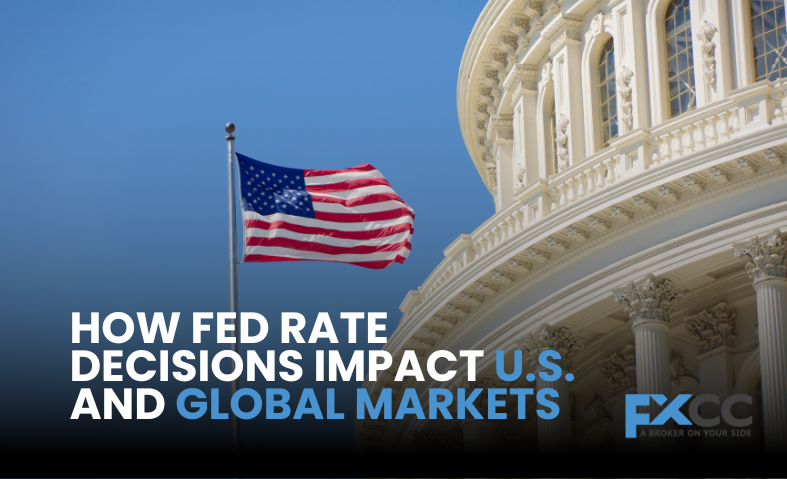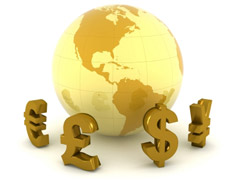The Federal Reserve (Fed) holds a central role in shaping the U.S. economy, and its decisions ripple across global markets. One of its most influential tools is the ability to adjust interest rates. These rate decisions impact everything from individual mortgages to international trade and investment flows. To understand the broader implications, let’s explore how the Fed’s rate decisions affect both the U.S. and global markets.

What Are Fed Rate Decisions?
The Federal Reserve, often referred to as the Fed, manages the U.S. monetary policy. A key component of this policy is the federal funds rate, which is the interest rate banks charge each other for overnight loans. By raising or lowering this rate, the Fed influences borrowing, spending, and overall economic activity.
Rate Hikes: When the Fed raises rates, borrowing becomes more expensive, which can slow down economic growth.
Rate cuts: Reducing interest rates lowers borrowing costs, boosting spending and investment.
These decisions are typically made during Federal Open Market Committee (FOMC) meetings, which occur eight times a year.
Effects on the U.S. Economy
The Fed’s rate decisions directly influence the U.S. economy in multiple ways:
1. Borrowing Costs
When the Fed raises rates, borrowing becomes pricier for both businesses and consumers. For instance:
Businesses: Higher rates can discourage companies from taking loans to expand operations, affecting growth.
Consumers: Mortgages, car loans, and credit card debt become more expensive, potentially reducing consumer spending.
2. Stock Market Performance
Fed rate changes can jolt the stock market:
Rate Hikes: Higher rates may lead to lower corporate profits, which can cause stock prices to fall.
Rate Cuts: Lower rates often boost stocks, as companies benefit from cheaper borrowing and investors seek higher returns in equities.
3. Inflation Control
One of the Fed’s primary objectives is to maintain inflation at around 2%. By adjusting rates, the Fed can:
Combat High Inflation: Raising rates cools down an overheating economy.
Prevent Deflation: Lowering rates encourages spending during global markets.
4. Labor Market Impact
The Fed’s policies also affect employment. Higher rates can lead to slower job creation, while lower rates may promote hiring and reduce unemployment.
Global Impacts of Fed Rate Decisions
Fed rate decisions don’t just affect the U.S.—their impact reverberates around the globe. Here’s how:
1. Currency Fluctuations
The U.S. dollar often strengthens when the Fed raises rates because higher returns attract foreign investors. A strong dollar affects global trade by making U.S. goods more expensive and imports cheaper.
Hurting Exporters: U.S. goods become more expensive overseas, reducing demand.
Benefiting Importers: A strong dollar makes foreign goods cheaper for American consumers.
2. Emerging Markets
Emerging economies are particularly vulnerable to Fed rate hikes:
Capital Outflows: Higher U.S. rates can cause investors to withdraw money from emerging markets and reinvest in U.S. assets for better returns.
Debt Servicing: Many emerging markets borrow in dollars, so a stronger dollar increases their repayment costs.
3. Global Stock Markets
Fed decisions often set the tone for global investor sentiment. For example:
Rate Hikes: Global markets may experience sell-offs as investors shift to safer U.S. assets.
Rate Cuts: International markets can rally when the Fed lowers rates, as cheap borrowing fuels global growth.
Challenges and Uncertainties
Predicting the Fed’s moves can be challenging, as decisions are influenced by a variety of factors, such as inflation data, employment numbers, and global events. For example:
Geopolitical Tensions: Crises like war or supply chain disruptions can sway Fed policy.
Market Expectations: Sometimes, markets react more to what the Fed signals about future rate changes than the actual decision.

The Role of Communication
The Fed’s communication strategy plays a critical role in managing market reactions. By providing clear guidance, the Fed helps prevent abrupt market volatility. Statements, press conferences, and economic projections give investors a roadmap of potential monetary policy shifts.
Conclusion
The Fed’s interest rate decisions hold significant power over both the U.S. and global markets. From influencing borrowing costs and consumer spending to driving global capital flows, these decisions shape economic trends far beyond America’s borders. While the immediate effects may seem concentrated in the U.S., their global impact underscores the interconnected nature of today’s financial systems. For investors, businesses, and policymakers alike, staying attuned to the Fed’s moves is crucial for navigating economic uncertainties.


